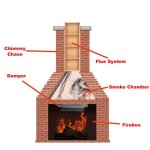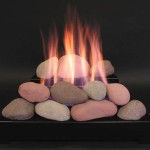Iron Fireplace Design Ideas 2024 Trends
The iron fireplace, a timeless architectural feature, continues to evolve in design and functionality, securing its place as a focal point in contemporary homes. The year 2024 sees a continuation of established trends alongside the emergence of new styles, driven by a desire for warmth, aesthetic appeal, and environmental consciousness. Understanding these trends allows homeowners and designers to make informed decisions when selecting or renovating their fireplaces.
Iron, prized for its durability and malleability, lends itself to a variety of design interpretations. From sleek, minimalist forms to ornate, traditionally inspired creations, the material provides a solid foundation for diverse aesthetic preferences. The trends for 2024 showcase an emphasis on personalization, integration with existing décor, and a renewed focus on the fireplace as a source of both heat and visual interest.
Minimalist Iron Fireplaces: Streamlined Elegance
One of the dominant trends for 2024 is the minimalist iron fireplace. This style prioritizes clean lines, geometric shapes, and a lack of superfluous ornamentation. These fireplaces are designed to seamlessly integrate into modern interiors, often appearing almost sculptural in their simplicity. The focus is on the inherent beauty of the iron itself, with a preference for matte finishes and subtle textures. Color palettes tend to be neutral, with blacks, grays, and whites predominating.
Within the minimalist category, several sub-trends are evident. Wall-mounted iron fireplaces are gaining popularity, offering a space-saving solution that adds a touch of drama to a room. These models often feature a floating effect, creating a sense of lightness and modernity. Another variation involves incorporating integrated storage for firewood, maintaining a clean and organized aesthetic. These features are usually hidden or subtly incorporated to maintain the minimalist theme.
The minimalist aesthetic often extends to the surrounding materials. Fireplace surrounds are frequently constructed from concrete, stone, or glass, chosen for their complementary simplicity and textural contrast with the iron. The juxtaposition of these materials creates visual interest without compromising the overall minimalist feel. Furthermore, minimal detailing such as hidden hinges or concealed venting is prioritised. These additions contribute towards the seamless, uncluttered aesthetic.
The Rise of Sustainable Iron Fireplaces
Environmental concerns are increasingly influencing fireplace design. The trend towards sustainable iron fireplaces reflects a growing desire to minimize the environmental impact of home heating. This involves selecting environmentally friendly materials, optimizing energy efficiency, and incorporating design features that promote responsible fuel consumption. The use of recycled iron is a significant component of this trend, reducing the demand for newly mined resources.
Sustainable design also extends to the choice of fuel. While traditional wood-burning fireplaces remain popular, there is a growing interest in alternative fuel sources, such as ethanol, propane, and natural gas. These fuels offer cleaner burning options with reduced emissions. Iron fireplaces designed for these fuels often incorporate innovative combustion technologies to maximize efficiency and minimize pollution. Furthermore, electric fireplaces that replicate the appearance of burning logs are also gaining popularity as a sustainable, no-emission alternative.
Design considerations for sustainable iron fireplaces often include features that enhance energy efficiency. Airtight construction minimizes heat loss, while insulated fireboxes help retain warmth within the home. The strategic placement of vents and dampers allows for precise control of airflow, optimizing combustion and reducing energy waste. The incorporation of heat recovery systems, which capture and redirect waste heat back into the home, is another feature growing in popularity. These systems maximize the efficiency of the fireplace and reduce overall energy consumption.
The sustainability trend also encourages the use of locally sourced materials. By supporting local iron foundries and artisans, homeowners can reduce the carbon footprint associated with transportation. This approach also promotes regional craftsmanship and preserves traditional skills. The combination of sustainable materials, energy-efficient design, and responsible fuel consumption are the key elements driving the sustainable iron fireplace trend.
Artisan Iron Fireplaces: A Celebration of Craftsmanship
In contrast to the minimalist aesthetic, another significant trend for 2024 is the artisan iron fireplace. This style celebrates the artistry and skill of blacksmiths and metalworkers, showcasing intricate details, unique textures, and handcrafted elements. Artisan fireplaces are characterized by their individuality and often serve as statement pieces within a room. They often feature custom designs tailored to the homeowner's specific preferences.
The artisan trend encompasses a wide range of styles, from gothic-inspired designs with elaborate ironwork to rustic fireplaces that evoke a sense of warmth and tradition. Common features include hand-forged details, hammered textures, and intricate scrollwork. The use of patinas and aged finishes adds depth and character to the iron, creating a sense of history and authenticity. These fireplaces often incorporate design elements from various eras, blending historical influences with contemporary aesthetics.
Commissioning a custom-designed artisan fireplace allows homeowners to express their personal style and create a truly unique focal point. Blacksmiths and metalworkers collaborate with clients to develop bespoke designs tailored to their individual needs and preferences. This process involves careful consideration of the room's architecture, the homeowner's aesthetic vision, and the desired functionality of the fireplace.
The artisan trend also extends to the incorporation of other handcrafted materials. Tiles, stone, and wood are often used in conjunction with iron to create visually rich and texturally diverse fireplace surrounds. Hand-painted tiles, carved stone details, and reclaimed wood elements add to the character and charm of these fireplaces. The combination of artisan ironwork with other handcrafted materials creates a warm and inviting atmosphere.
Artisan fireplaces often serve as a reflection of the homeowner's personality and taste. They can be designed to tell a story, evoke a particular mood, or simply celebrate the beauty of handcrafted objects. These fireplaces are not merely functional heating appliances; they are works of art that add value and character to any home.
Technology Integration in Iron Fireplaces
The integration of technology is becoming increasingly prevalent in all aspects of home design, and fireplaces are no exception. In 2024, a growing number of iron fireplaces incorporate smart features that enhance convenience, control, and safety. These technologies range from remote control operation to sophisticated monitoring systems that optimize energy efficiency and ensure safe operation.
Remote control functionality is one of the most common technological enhancements. This allows homeowners to adjust the flame height, temperature, and fan speed of their fireplaces from the comfort of their couch. Some models also offer programmable timers that allow the fireplace to be automatically turned on or off at pre-set times. This feature is particularly useful for homeowners who want to come home to a warm and inviting space.
Smart fireplaces also often incorporate sensors that monitor temperature, carbon monoxide levels, and other environmental factors. These sensors can automatically shut down the fireplace in the event of a malfunction or dangerous condition. Some models also feature alerts that can be sent to the homeowner's smartphone or tablet, providing real-time updates on the fireplace's status.
The integration of smart home systems is another area of growth. Many iron fireplaces can now be integrated with popular smart home platforms, such as Amazon Alexa and Google Home. This allows homeowners to control their fireplaces using voice commands and integrate them with other smart home devices, such as thermostats and lighting systems. This level of integration provides seamless control and automation, enhancing the overall convenience and efficiency of the home.
The use of digital displays is also becoming more common. These displays can provide information on the fireplace's temperature, fuel consumption, and other relevant data. Some models even feature interactive displays that allow homeowners to customize the fireplace's settings and view diagnostic information. The integration of technology is transforming the iron fireplace from a simple heating appliance into a sophisticated and connected home amenity.
Beyond the Rectangle: Non-Traditional Shapes and Configurations
While rectangular fireplaces remain a popular choice, the trends for 2024 indicate a growing interest in non-traditional shapes and configurations. This shift reflects a desire for greater design flexibility and the creation of more unique and eye-catching fireplace features. Circular, oval, and triangular fireplaces are gaining traction, offering a departure from the conventional rectangular form.
Circular iron fireplaces, for example, can create a dramatic focal point in a room, particularly when suspended from the ceiling or incorporated into a central pedestal. These designs often feature a 360-degree view of the flames, enhancing the ambiance and creating a sense of warmth and intimacy. Oval fireplaces offer a softer, more organic aesthetic, blending seamlessly with curved walls and rounded furniture.
Triangular fireplaces are particularly well-suited for corner installations, maximizing space and creating a visually interesting feature in an otherwise underutilized area. These designs can be customized to fit specific corner angles and architectural constraints. The use of asymmetrical designs is also becoming more popular, adding a touch of modern flair to the traditional fireplace form.
In addition to non-traditional shapes, designers are also experimenting with unconventional fireplace configurations. Double-sided fireplaces, which allow for viewing from two different rooms, are becoming increasingly popular in open-plan living spaces. These designs provide both heat and visual interest, creating a connection between adjacent areas. See-through fireplaces, which feature glass panels on multiple sides, offer a similar effect, allowing for unobstructed views of the flames from various angles.
The trend towards non-traditional shapes and configurations reflects a growing desire for personalization and architectural innovation. By moving beyond the conventional rectangular form, homeowners and designers can create truly unique and memorable fireplace features that reflect their individual style and enhance the overall aesthetic of their homes.

15 Most Inspiring Fireplace Design Trends Of 2024 Home Briefings

Top Fireplace Design Trends For 2025 You Ll Love Priddy Chimney

Sculpt Fireplace Collection Timeless Elegance And Modern Charm Design Trends In Cast Iron Wood Fire Fireplaces

Modern Fireplace Wall Design Mantel Decor Ideas Trendy Designs 2024

2025 Trends In Fireplace Designs Classic Distributors

Future Of Fireplace Design Predictions For 2024 Trends Gws Masonry Home Improvement

Decoration And Trends Give Your Living Room An Industrial Touch Panadero

Top Fireplace Design Trends For 2025 You Ll Love Priddy Chimney

10 Fireplace Ideas Stunning Designs To Transform Your Home Stovax Gazco

Future Of Fireplace Design Predictions For 2024 Trends Gws Masonry Home Improvement








